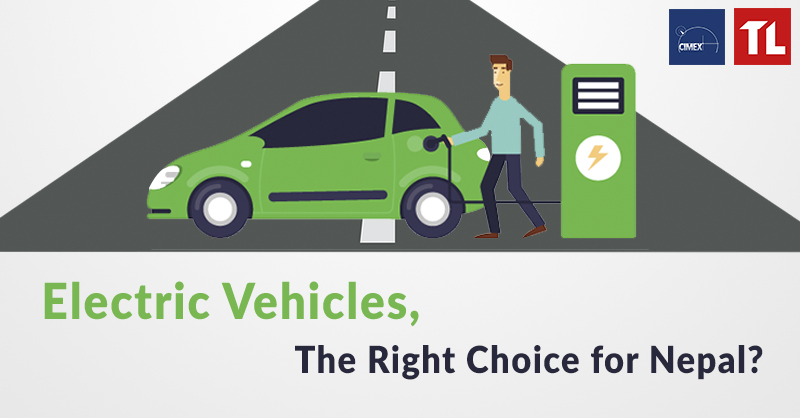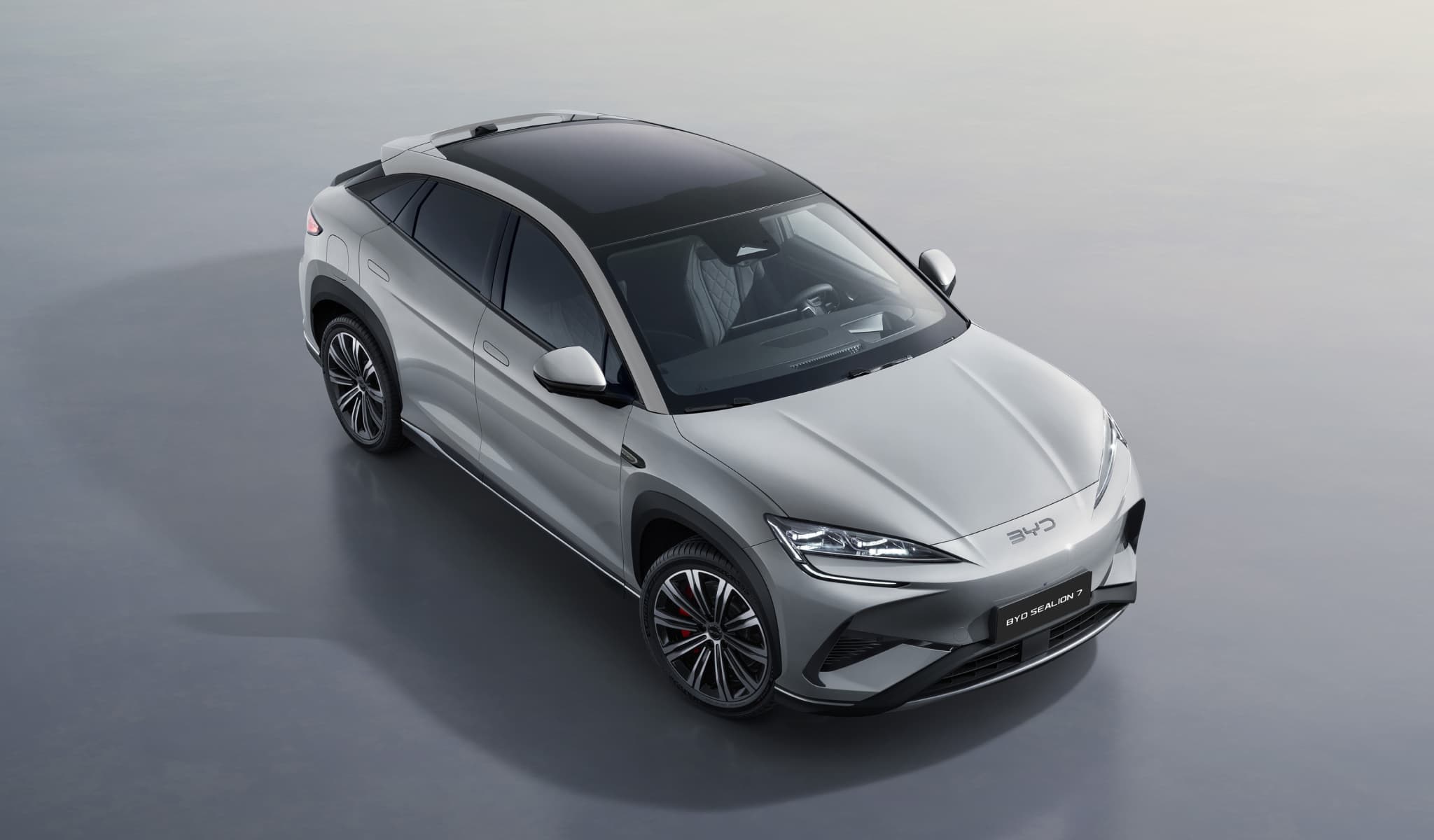Electric Vehicles (EVs) – the future of automobiles. The cleaner, better alternatives to our existing fossil automobiles are already in! Well, there already are lots of EVs that we see on the roads. And they already seem like a cost-effective alternative as compared to the fossil ones. How, do you ask?
First things first, EVs don’t release exhaust. No air pollution! Imagine travelling places via the roads of Kathmandu smoke-free! How nice would it be? Secondly, you wouldn’t have to wait in a long, never-ending fuel line, as of what we’ve faced till the date. Two major wins already.
SEE ALSO: Car Price List in Nepal
The history of EV’s in Nepal traces back to 1975 with the use of trolley bus in the state with a 13-KM route between Tripureshwor in Kathmandu and Surya Binayak in Bhaktapur under the assistance of the Chinese Government. But later in 2001, the state-owned trolley bus operation became bankrupt due to inefficient management, due to which the service had to be discontinued, and formally shut down in 2009.
Another example of EV promotion in Nepal is by introducing 600 electrically powered Tuk-Tuks (three-wheelers) in Kathmandu back in 1996. There are around 1,200 “Safa” Tempos in the valley included the ones introduced in 1996, as stated by Onward Nepal.
In the past couple of years, several electric two-wheeler brands were introduced in the Nepali market like — Terra Motors, Hero Electric, Vmoto, BMC Electric Scooters and newly launched Bela Motors, as stated by The Himalayan Times.
SEE ALSO: Nepal’s Future in Artificial Intelligence
Currently, the introduction of electric Tuk Tuk, also called City Safari in the Terai region has made travelling the local places very efficient and faster as compared to the traditional manual rickshaw in practice. They can run around 100 kilometers on a full charge in the plains, and the fare for a single person is inexpensive.

While I recently learned about the NEA setting up charging stations to promote the usage of electric vehicles from our article published on October 21, 2017, I got the opportunity to get the answers to my queries from Mr. Mukunda Raj Nakarmi, the Marketing Executive at Cimex Inc. Nepal, the authorized dealer of EVs in Nepal from BYD (a Chinese manufacturer of automobiles, rechargeable batteries, buses, forklifts, etc.) in Nepal as follows:
TechLekh: What kind of electric vehicles get sold from your company?
Mr. Nakarmi: BYD has all types of 4 wheel vehicles, from forklift to Lorries and even sky rails. But as of now, we only have one model, BYD e6, which is a premium crossover with a range of 400kms in a single charge. In the near future, we will be having BYD e3 which will be comparatively smaller than e6 and we are also planning to bring in BYD’s world famous full electric bus, BYD k9, whose dimension will be similar to that of our Sajha bus (please note only the dimensions because features of that bus will be far more better and futuristic.)
TechLekh: What kind of clients do you have to deal with?
Mr. Nakarmi: Like I mentioned earlier, we only have BYD e6 for now which is full electric EV and it needs 3 phase electricity line to charge. We do not have public charging stations, which makes EVs a little inconvenient for the general public
We are focusing more on fleet operations by the Government and providing charging station along with the vehicle in their respective office premises. So basically our clients are government officers for now and we believe that this change from fossil fuel to EVs must come from the policy level.
Other than that, we get a lot of queries from people.
TechLekh: Do you get orders for specific vehicles?
Mr. Nakarmi: Yes; we have actually sold out almost all the e6s of the first batch and the next batch is arriving soon.
We have announced that we will be launching BYD e3 very soon and we are getting a very good response from the people. A lot of people are really interested in this vehicle.
We also get a lot of queries for e-buses and hopefully we will get to see e-buses in the Nepalese roads in the near future.
TechLekh: Where do you import the vehicles from?
Mr. Nakarmi: We import them from BYD Headquarters, Shenzhen, China.
TechLekh: What are the marketing strategies to attract prospective buyers?
Mr. Nakarmi: Making people aware of all the pollution that other vehicles produce is one of the strategies that we apply. The second is making them realize that EVs are a good investment for a long-term period as well as cost-effective compared to fossil fuel vehicles.
TechLekh: How affordable do you think are the prices of the electric vehicles for the common Nepalese client(s)? And in comparison to the fuel-based vehicles, how often do people prefer the electric vehicles?
Mr. Nakarmi: We can see a lot of expensive vehicles in the Nepalese roads. Compared to that and the value that EVs provide, it is affordable.
People are realizing climate changes taking place and are suffering from all the pollution in the valley; this is high time that people realize the importance of EVs, and I think we are getting there.
TechLekh: What are the government policies there for the import of electric vehicles in Nepal?
Mr. Nakarmi: It is different from other vehicles in the sense that 10% import tax is to be paid and there’s no road tax to be paid for an EV.
TechLekh: What policies in your opinion should be introduced to effectively promote electric vehicles? (For an example, the Government has decided to set up charging stations at its central office in Ratnapark to promote the use of electric vehicles.)
Mr. Nakarmi: There will be a gradual change in the automobile sector but for now I think that Government offices must switch all their vehicles to EVs so that they can set an example to the people.
TechLekh: In your opinion, do you think the electric vehicles will surpass the sales of fuel-based vehicles in the near future? Why?
Mr. Nakarmi: I highly believe that because almost all of the top automobile manufacturers are bringing their EVs to the market and eventually it will take over the fuel-based vehicles.
In the meanwhile, we also learned that Cimex Inc. Nepal has also sold one model e6 to the NEA engineering Company and one to the National Planning Commission. They have also won the largest EV fleet by the ADB (Asian Development Bank) and Nepal Tourism Board in Lumbini.
As of now, many people would still consider fossil vehicles over EVs for reasons. One of those could be the unavailability of charging stations. For the local traveling, the EVs are a good option. Most electric cars let us travel a distance of around 300-400 kilometers as the driving range. It would obviously not be an option for longer routes because nobody would want to get stuck midway. On the other hand, you get petrol pumps in almost every stop, or if you don’t, you could still carry a stock with you.
Once the charging station problem is solved, why not prefer EVs? They are cost-effective as well as environment-friendly. Save some of the resources for your kids and grandkids to see!
Editor’s Recommendations
- Nepal’s Future in Artificial Intelligence
- Nepal and Cyber Security: A REVIEW
- Nepali Youths Prone to Cell Phone Addiction
Thanks for being with us. Keep reading such articles on TechLekh!
-
BYD Sealion 7 Set to Launch in Nepal: Bigger Than Atto 3, Pricier TooHIGHLIGHTS BYD Sealion 7 price in Nepal is expected to be between Rs. 70 Lakhs…
-
Nothing Phone (3) Pre-Booking Now Open in Nepal with Exciting Offers!HIGHLIGHTS The Nothing Phone (3) price in Nepal starts at Rs. 109,999 (12/256GB) with the…
-
Honor X6c with 120Hz Refresh Rate and IP64 Rating Open for Pre-BookingHIGHLIGHTS The Honor X6c price in Nepal is Rs. 16,999 (6/128GB) and Rs. 18,999 (6/256GB).…














